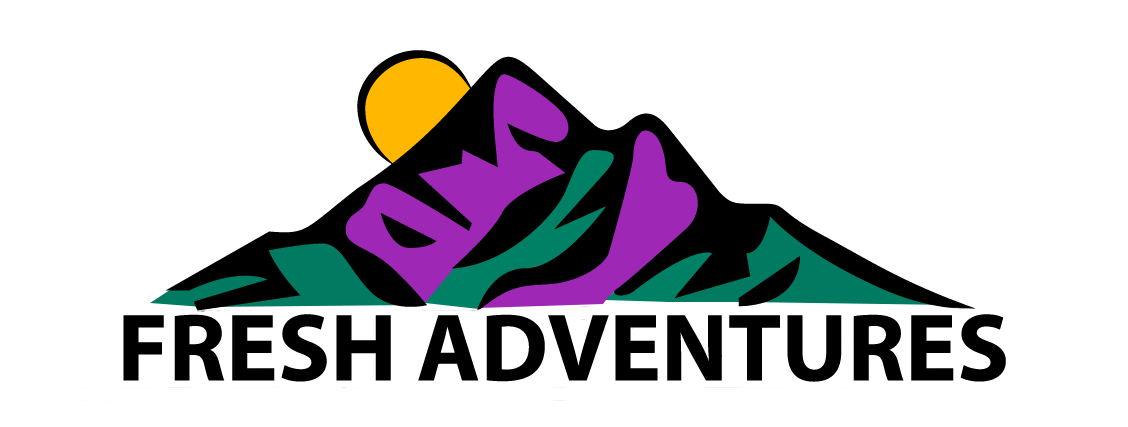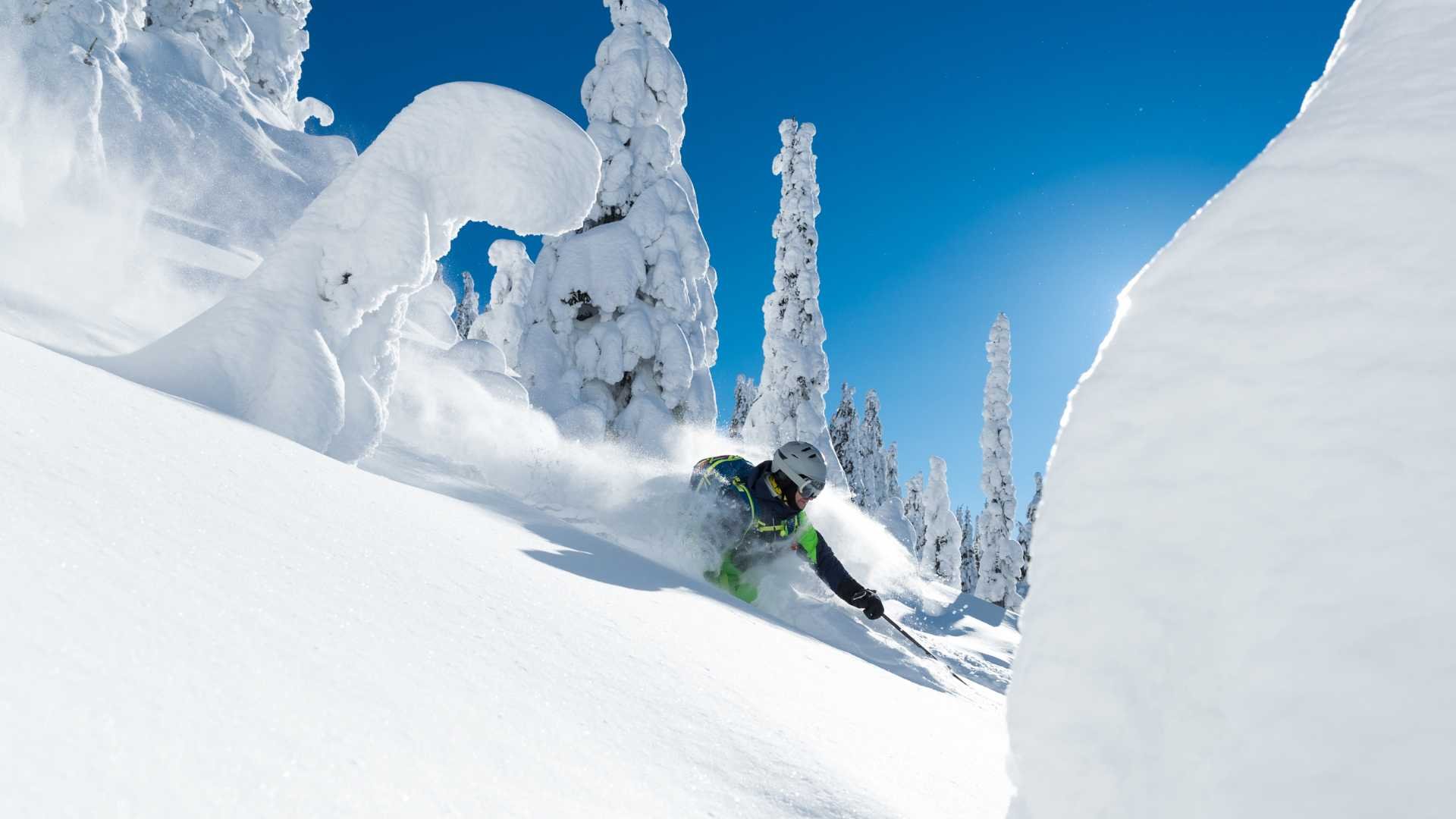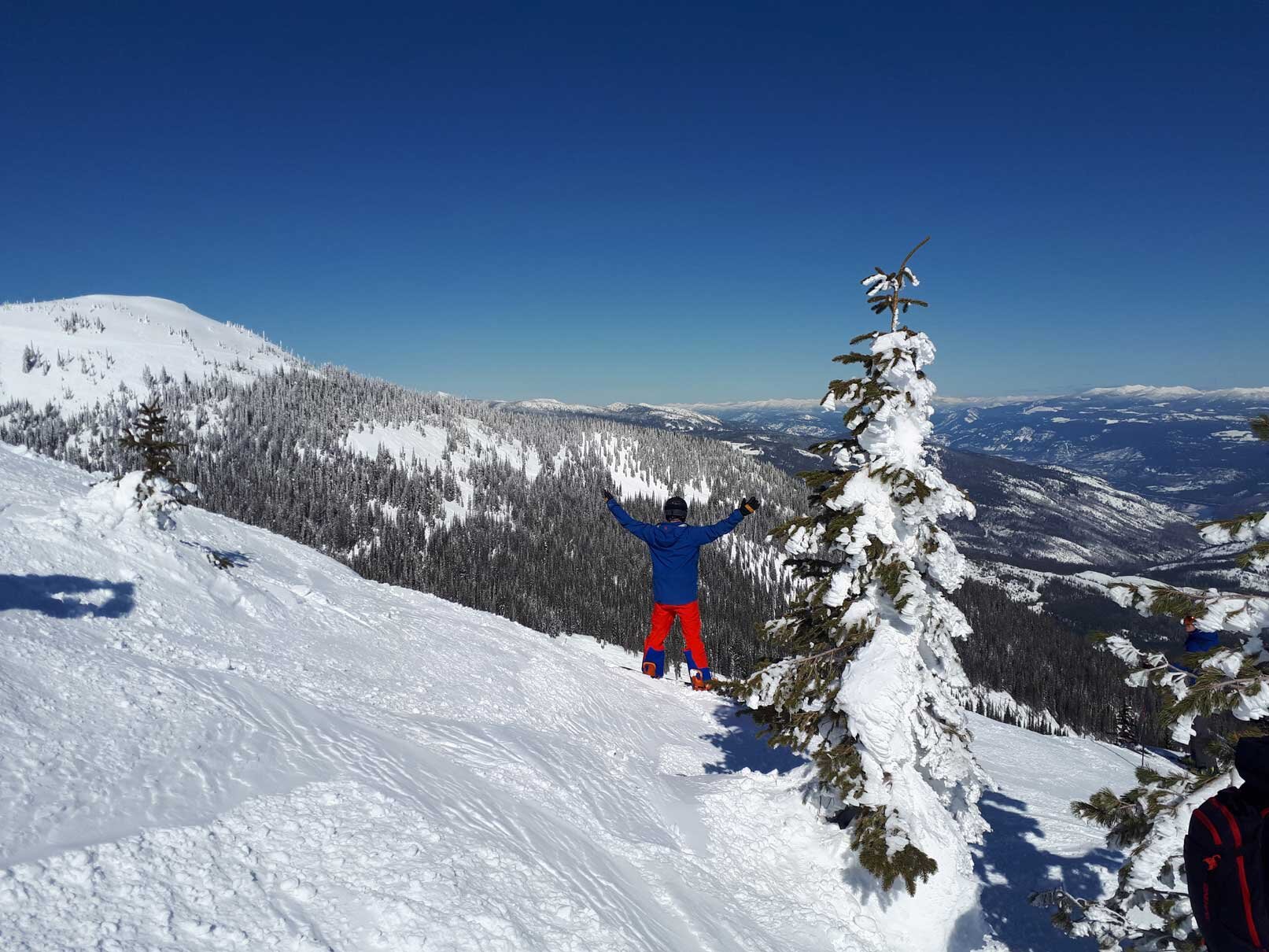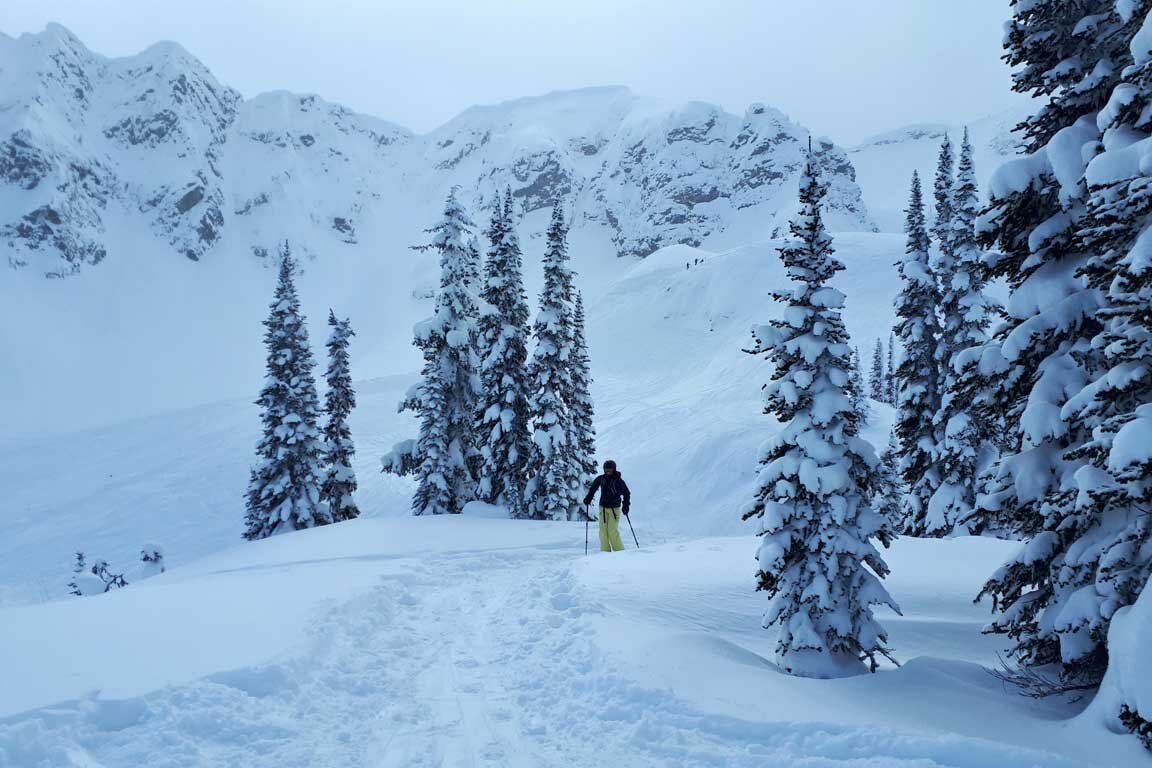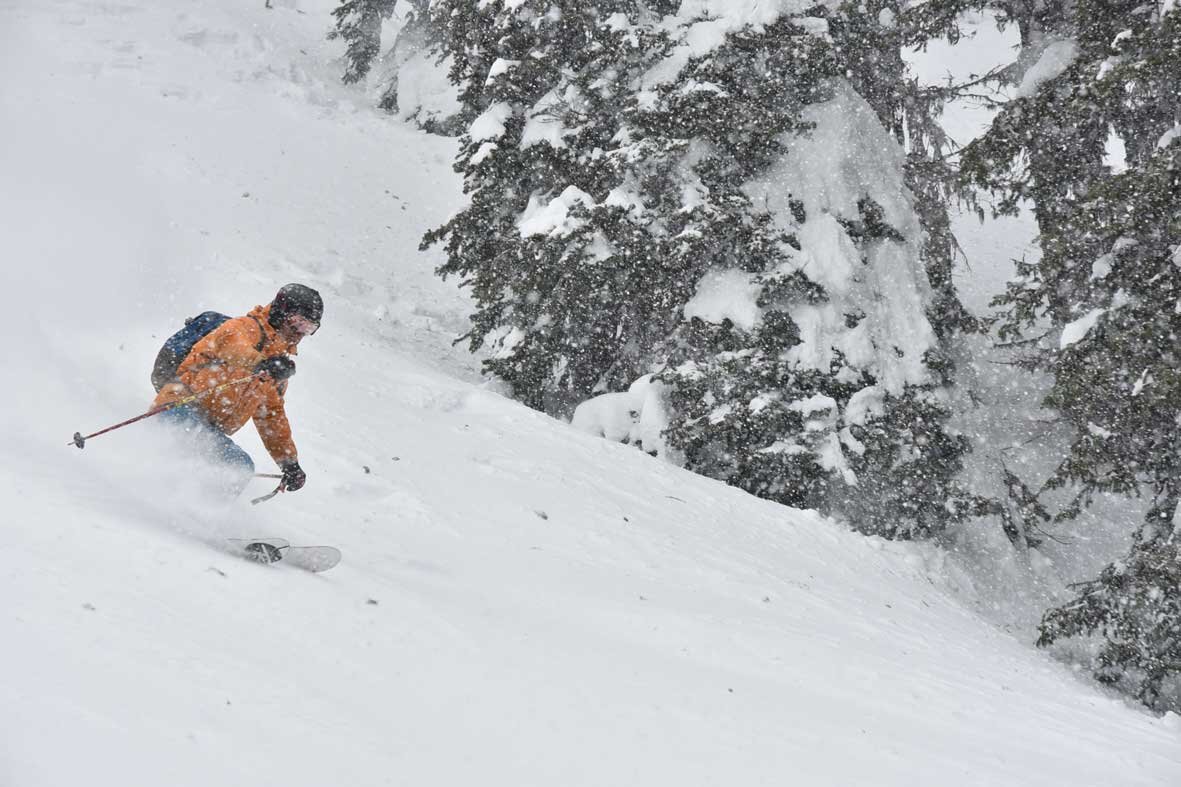Check out our guide to the best tours and guided activities on Vancouver Island for adventure travelers. Discover the best day tours and multiday tour packages on Vancouver Island, including Victoria, Tofino and Campbell River areas.
The Best Things To Do On Vancouver island
Must See Places On Vancouver Island
Best Guided Hiking Tours In USA | Beginner to Advanced
These are the best guided hiking tours and walking vacations in the USA. We have rounded up the top rated and best deals on guided hiking trips for beginner to advanced hikers. These are the perfect USA hiking packages for anyone looking for a quality vacation, whether traveling solo or with a group.
How To Travel Alaska & The Best Ways To See Alaska
Denali National Park Travel Guide | 2025
The Best Things to See and Do In Banff National Park For Summer 2025
Here Are The Best Places To Visit In Canada During Summer 2025
The Best Natural Attractions In The Yukon
The Best Ski Holidays For Solo Travelers Around The World
Ikon Pass VS Epic Pass Canada
ikon pass vs epic pass comparison in canada
Should I get an Ikon or Epic Pass to Ski in Canada?
Both Ikon Pass and Epic Pass have some amazing deals to offer skiers and snowboarders around the world. While both passes have their own pros and cons, we are here to help you compare the two passes in Canada. Which is the best ski pass in Canada? We will touch on several important considerations in this IKON Pass vs EPIC Pass comparison in Canada below! Both passes have access to several of the resorts on our list of the best freeride resorts for advanced and expert skiers in Canada. Read on to find out if the Ikon Pass or the Epic Pass is the better pass for you!
Ikon Pass details in Canada
The Ikon Pass is a heavy hitter in the ski pass game and seems to be growing each year. We have outlined what the Ikon Pass includes in Canada below. The pass inclusions consist of two parts- unlimited skiing and limited days at partner resorts. The Ikon Pass includes unlimited skiing at Blue Mountain and Mt Tremblant, with limited ski days at Red Mountain, Skibig3 and Revelstoke Mountain Resort, along with a few others. If you are a skier living in Montreal or Toronto area, and plan on doing a ski trip in British Columbia or the Rockies this winter, this pass makes perfect sense, as well as if you plan to visit any of the American resorts on the Ikon Pass.
Ikon pass benefits in canada
Full ikon pass- $1840 cad/ $1359 USD (2024/2025 season)
Unlimited skiing at Blue Mountain
Unlimited skiing at Tremblant
7 days at Skibig3 (Lake Louise, Sunshine, Norquay)
7 days at Red Mountain
7 days at Revelstoke Mountain Resort
7 days at Sunpeaks Resort
7 days at Cypress Resort
7 days at Panorama Mountain Resort
No blackout dates on the full Ikon Pass
ikon base pass- $1310 cad/ $969 USD (2024/2025 season)
Unlimited skiing at Blue Mountain
Unlimited skiing at Tremblant
5 days at Skibig3
5 days at Revelstoke Mountain Resort
5 days at Red Mountain
5 days at Panorama Mountain Resort
5 days at Sunpeaks
5 days at Cypress Mountain Resort
Blackout dates apply
Is The Ikon Pass worth it In Canada?
The Ikon Pass can be one of the best ski passes in Canada, depending on where you live and ski all season long, as well as your travel style and frequency. If you live in Montreal or Toronto areas and ski at Blue Mountain or Mt Tremblant regularly, the Ikon Pass adds a lot of value as a regular season pass with unlimited skiing at your local resort.
If you travel a few times each winter to ski in Canada, or at the other Ikon Pass resorts in the US, the pass adds further value by covering 5 or 7 days at up to 51 resorts. If you go for a ski trip in Canada with 7 days of riding on the mountain, you would be paying roughly $840 for lift tickets, depending on the mountain and packages available. If you go on two trips like this, the pass easily pays for itself and as a bonus, you can ski unlimited at your home resort if you ski at Blue or Tremblant.
If you spend less time on trips, or go on fewer trips, the pass may not be as valuable to you.
Epic pass Details In Canada
The Epic Pass has been shaking up the ski industry for a few years now, offering unlimited skiing at all Vail owned ski resorts, including Whistler/ Blackcomb. The Epic Pass offers very little to skiers on the East Coast of Canada, and even to skiers on the East Coast of the USA. In Canada, East Coast skiers can only ski 7 days total in Quebec, and if they do that, the only other benefit is unlimited skiing at Whistler during a ski trip to the West Coast. For skiers around Vancouver there is an obvious appeal to the Epic Pass with unlimited skiing at Whistler/ Blackcomb, just two hours North of Vancouver. Vancouver skiers can also benefit during a trip to the RCR resorts in interior BC with a total of 7 included days. This could look like a ski week to Kicking Horse, Kimberly and Fernie, with 2,2 and 3 days at each of the resorts, which are only a few hours apart from each other.
Epic pass benefits in canada
Epic Unlimited Pass $1025 usd/ $1385 cad (2024/2025 season earlybird pricing)
Unlimited skiing at Whistler/ Blackcomb
7 days skiing at Resorts of the Canadian Rockies (7 total days at Kicking Horse, Fernie, Kimberly, Nakiska, Stoneham and Mont Sainte-Anne)
is The Epic Pass Worth It In Canada?
To be honest, we’d like to see some more versatile offerings for Canadian skiers before recommending the Epic Pass in Canada. Th Epic Pass may be strong for unlimited skiing in Western US resorts, but in Canada, it lacks punch, with just a total of 7 day (not even 7 days each) at the RCR resorts, which are absolutely worth exploring for a good week each! Unlimited skiing at Whistler is great, but only appeals to Vancouver residents, who pan to spend more than 10 days at Whistler is a season.
ski season pass comparison
Is the Ikon Pass or Epic Pass better in Canada for skiing?
It’s true, both the Ikon Pass and Epic Pass both have pros and cons. Perhaps the most significant factor when comparing the two passes is where you live and ski the most. If you live in Toronto or Montreal and ski near there, taking a trip or two each winter, I would recommend the Ikon Pass. Also, if you live on the East Coast or plan to ski in the Eastern United States, I would recommend the Ikon Pass, since it includes far more resorts on the East Coast. If you plan on attending our guided ski and snowboard tours in British Columbia, I would suggest the Ikon Pass.
If you live in Vancouver and ski locally, taking a trip once or twice a year, I would recommend the Epic Pass. If you are attending our guided ski tour in the Rockies I would suggest the Epic Pass.
Another consideration for skiers in Western Canada is that the Ikon Pass includes 42 ski days at 8 resorts, while the Epic Pass includes only 7 days at 4 resorts, plus the unlimited skiing at Whistler.
Whichever pass you end up with, we hope to see you on one of our guided small group ski and snowboard trips along the Powder Highway. These trips are a perfect way to dodge crowds and get the powder stashes with local guides! Best of all, you save big on our tours with both the Epic Pass and Ikon Pass, or both!
Make the most of your pass on our guided Powder Highway ski & snowboard tours!
Ski With our local guides and a small group of likeminded skiers and snowboarders on the powder chasing adventure of a lifetime!
best of BC Ski/ snowboard Tour - 11 Days
Revelstoke - Kicking Horse - Whitewater - Red Mountain
Spend 11 days exploring the absolute best of the Powder Highway on this guided ski tour in Canada. This tour package spends two days at each resort, covering the best terrain & snow in Canada with local guides.
Ultimate Powder Highway Roadtrip- 12 Days
Fernie - Whitewater - Red Mountain - Revelstoke - Kicking Horse
Named the ultimate Powder Highway ski trip for a reason! Ski the best resorts in the Rockies and Powder Highway. Soak your tired legs in amazing hot springs and enjoy the best food and drink in 5 mountain towns.
Ikon pass FAQ
How much does the ikon pass cost?
For the 2024/2025 season the full Ikon Pass costs $1359 usd or $1840 cad, and the Ikon Base Pass costs $969 usd or $1310 cad.
Where can I get the Ikon Pass?
You can purchase the Ikon Pass directly online from the Ikon Pass website, several Ski Travel Agencies, or any mountain that the Ikon Pass is valid at.
Epic Pass FAQ
How mUch Does the Epic Pass Cost?
For the 2024/2025 season, the Epic Unlimited Pass costs $1025 usd or $1385 cad if ordered before October 9, 2024.
Where Can I get the Epic Pass?
You can order the Epic Pass from the Epic Pass website, or can also purchase it from any Epic Resort, including Whistler/ Blackcomb.
About the author
Alex Ross- Lead Guide/ Founder
Let’s just say Alex didn’t want to work a real job when he grew up. He had his heart set on avoiding any kind of accounting, human resources, compliance, marketing and business administration, in order to be free for his dream job as a ski guide. Now he guides people on skis, but mostly does accounting, human resources, compliance, marketing and business administration work!
These Are The Best Freeride Ski Resorts In Canada
Revelstoke Mountain Resort Guide and Review
A Traveler's Guide To Alaska's Best National and State Parks
The Top Guided Hiking Trips & Tours In Canada
The Best Backpacking Trails and Multiday Hikes In The Canadian Rockies
Best Places To Backcountry Ski In Canada
Best Places In Canada To Backcountry Ski And Snowboard
A guide to the best backcountry skiing in british columbia and alberta.
Backcountry skiing and snowboarding in Canada is up there among some of the best ski touring in the world. Deep, dependable snowfall and gargantuan mountains make for some of the best ski conditions available on the planet.
There are hundreds of places to go splitboarding in Canada and ski touring, so we have created this page to help you find the best terrain for your backcountry trip.
The best backcountry skiing and snowboarding in Canada is between the months of December to March, but you can continue to explore the mountains well into May and some avid touring junkies start getting out in late October.
Backcountry skiing in canada is a powder lovers paradise!
Earlier in the season is typically fresher snow with a lower snowpack, and more features since the snow pack hasn’t yet covered the tree stumps and boulders fully. Later in the season you are skiing on older snow, with a deeper snow pack that fills in a lot of the bigger features, smoothening out gullies and making cliffs a little friendlier.
Most of the best backcountry skiing areas in BC are host to Canadian ski guides and backcountry ski and snowboard lodges.
This article features the best backcountry ski and snowboard areas in British Columbia and Alberta. British Columbia has many areas and mountain ranges, while Alberta is limited to ski touring in the Rockies.
Where to go backcountry skiing in canada
Squamish/ whistler backcountry ski areas
Backcountry snowboarding and skiing along the Sea to Sky Highway is rich with areas to explore. Some of the best ski touring routes near Squamish are in the Elfin Lakes area and Garbaldi Lake area. Expect a variety of mellow slopes, along with some short, steeper alpine runs, like Diamond Head and Gargoyles. You can stay in the Elfin Lakes Hut for a small fee and use it as a basecamp for some long ski mountaineering trips near Squamish. The tour up to Garibaldi Lake is long, but rewarding with excellent views and amazing snow.
Travelling a bit further North, you can ski tour in the Callaghan Valley, as well as off Whistler/ Blackcomb ski resort. One popular ski touring area in Whistler is Disease Ridge, the ridge just outside the boundaries of Blackcomb.
Best for: stable snow, deep snowpack, variety of open alpine and trees, availability of huts.
duffy lakes backcountry ski area
Backcountry skiing and snowboarding in the Duffy Lakes area is epic and avoids a lot of the crowds found closer to Vancouver. There are several great ski touring and split boarding routes found here and the snow and terrain are both world class.
Cerise Creek is one of the best ski touring areas along the Duffy Lakes Road, offering easy touring and access to the Keith Flavelle Memorial Hut. There are many options to be found here, featuring both sheltered tree skiing and more open, advanced alpine runs.
Mount Rohr is just a few kilometres down the road from the Cerise Creek ski area, and is the access point for the Wendy Thompson Hut. Ski touring on Mt Rohr offers some incredible views, and a variety of terrain options, depending on the line you pick.
Best for: Hut access, tree and alpine skiing, venturing away from the Vancouver crowds.
coquihalla Summit backcountry skiing
Ski touring at Coquihalla Summit is a perfect place for back country enthusiasts to sharpen their skills in a relatively simple area. Coquihalla Summit is just 2.5 hours from Vancouver, so accessing it is fairly easy and most of the lines are visible from the highway. This also means that crowds can be a factor, so we recommend going during the week to have the place to yourself.
There are several ski touring and splitboarding routes at Coquihalla Summit, including Yak Peak, Nak Peak, Thar Peak, Zoa and the Needle. Various access points of the highway lead to each of these splitboarding areas.
Best for: Easy to find lines that can be seen from the highway.
rogers pass backcountry ski touring
Ski touring in Rogers Pass is some of the most epic in the world, and definitely one of the best places to backcountry ski in Canada. Rogers Pass is centrally located, right between Revelstoke and Golden, with the Transcanada Highway running right through the middle of it.
Ski touring in Rogers Pass requires a bit of preparation and knowledge, since the area is under artillery avalanche control by the ministry of highways at all times. You need to check in at the visitor center and get a day pass, to ensure that you are not entering an area with possible artillery strikes in progress.
Terrain in Rogers Pass varies from simple to complex, with long access routes passing through and directly under many overlapping avalanche paths. There is significant overhead hazard and it is impossible to tell if there are skiers and snowboarders above you, so be sure to make smart choices in where to travel, and where to stop.
There is too much to write about backcountry skiing in Rogers Pass for this article so we will expand on this in a future post, but here is a quick run down.
Illecillewaet Parking area gives access to the Asulkan Valley, hut and surrounding tterrain. This includes some iconic ski touring routes like Avalanche Crest, Glacier Crest and routes off the peaks around the Illecillewaet Glacier.
The Rogers Pass Discovery Center is the access point to Grizzly area and the route towards Balu Pass. This is also near Hermit, which is the access point for Hermit Glacier and the end of the Tupper Traverse.
Closer to Revelstoke is Bostock Parking area with access to several of Canada’s best ski touring areas, and to the East is Beaver, with access to even more places to ski tour in Canada.
Like I said, too much on Rogers Pass for this post, but we will create a dedicated article in the near future on skiing in Rogers Pass.
Best for: Virtually everything. Expect long approaches, with long runs and epic views. Significant avalanche hazard so come prepared!
revelstoke sidecountry ski touring
Revelstoke Mountain Resort has some incredible sidecountry ski areas just outside the resort boundary. You can access these areas with a day pass to take the chairlift to the top of the ski area, then take the skin track east towards Montana and Kokanee bowls, or North to Mackenzie Summit and the surrounding chutes. If you are looking for a steep and challenging backcountry ski route near Revelstoke, look no further than the chutes that drop from Mackenzie Summit area into Greeley Bowl. These include Birthday Chute, Brown Shorts and Door Chutes.
If you are looking for a longer ski touring route in Revelstoke you could head east from the top of the Stoke chair and traverse to Montana bowl and Kokanee Bowls. Here you can find some open or treed terrain, with a few aspects. Once at the bottom of the run you can traverse/ ski tour back to Ninja Traverse to return to the bottom of the ski resort.
Local Expert: Check out Revelstoke Backcountry Guides for a serious day of fun ski touring around Revelstoke!
Best for: Longer traverses to varied terrain, some easy access chutes and steeps.
whitewater ski resort ski touring
Whitewater Ski Resort is a haven for ski touring and splitboarding! Some of the most snowfall in the world (over 40 feet) and a vast array of ridges with open and closely tree’d slopes make this place epic for backcountry skiing.
If you have a pass, or a single ride pass, you can hop on the chair for the ski tour up to Prospector Peak, or beyond to Ymir Peak. Prospector has some short steep runs into a bowl, followed by expansive tree skiing and Ymir has several longer steeper and more open runs. First Choice is an incredible fall line chute and Ymir face is a steep and somewhat exposed descent into Ymir Bowl.
We recommend ski touring from Silver King chair towards Whitequeen. From the top of this backcountry ski route you can drop down the front side towards the Whitewater Road, or down “Blackqueen” on the backside into Five Mile Basin. If you drop down the back you should definitely be confident in your navigation skills, and ability to skin back up or through Hummingbird Pass to return to the road. Many skiers and snowboarders get lost back there.
Local Expert: Check out Kootenay Backcountry Guides for some highly professional ski guiding and local expertise in this area!
Best for: Easy access, safe terrain with limited avalanche path exposure.
icefields parkway backcountry skiing
Backcountry skiing in the Canadian Rockies offer some of the best ski touring routes in Canada, as well as some of the best scenery and open terrain, where dodging crowds is easy.
Banff and the Icefields Parway are not far from the significant population of Calgary, though there are no crowds here during week days. The Icefields Parkway covers roughly 230 km, stretching from Lake Louise to Jasper along highway 93. There is little maintenance here in the winter, so be sure to have all wheel drive, snow tires or chains.
There are several of Canada’s best ski touring routes and backcountry ski areas along this highway, which runs parallel to the continental divide. Here are a few of the touring routes for skiers and snowboarders that you can try this winter!
Bow Summit is an easy to see and access route along the shoulder of Bow Mountain. The access is easy, with just a few minutes approach from the highway. Observation Peak lies a few km to the North with a wide, open ridge, making for some great powder turns in the right conditions.
There are several visible ski touring routes available from Bow Lake, including the foot of Crowsnest Mountain, just to the South.
Best for: Early and late season ski touring, wide open views, light/ dry snow.
kananaskis splitboarding and ski touring
Kananaskis Country is one of the best areas in Canada to backcountry ski, with several great touring routes along the valley. Ski touring is Kananaskis Country is a popular choice for Calgary skiers and snowboarders, due to the short drive to access this area. Be weary of the cold temperatures if you are used to skiing on the coast!
There are several of Canada’s best ski touring routes in this backcountry area, including but not limited to some of the ones named below.
North and South Burstall Pass offer easy access from the highway in Peter Loughead Provincial Park, which make them popular choices. The Shark Mountain and Mount Engadine ski areas offer several amazing route options for skiers and splitboarders as well! You can end your ski touring day with a glass of wine at Mount Engadine Lodge, or pass through Canmore and stop for dinner at the Grizzly Paw Brewery.
Best for: Proximity to Calgary, low crowds on weekdays, sunny weather, epic scenery.
Southern Lakes Region, Yukon
Yup, you read that correctly. Wide open mountains (big ones), proximity to ocean, and scarcity of humans make the Yukon a really good, and highly underrated place to go backcountry skiing in Canada. I would venture as far as to say that this is one of the best places to backcountry ski in Canada, albeit a very far and tough to get to one.
There is definitely something magical about skiing up here. Could be the empty mountains that go on forever. Could be the surprisingly good craft beer in Whitehorse. Could be the northern lights that dance overhead if you stay out in the mountains overnight. Whatever it is, we highly recommend you try it.
White Pass is not too far from Whitehorse and gets an abundant snowpack as the wet ocean air rises over the pass and dumps lots of the white stuff on the surrounding mountains. There are lines right off the highway and you can easily make it back in time for happy hour.
Best for: people looking to go and do something wild and interesting. Skiing Coquihalla Pass is so mainstream.
Check Out Our Guided Ski Tours
Ski In A fun/ likeminded group
ski with legendary local guides
Everything planned out for you
About the author
Alex Ross- Lead Guide/ Founder
Let’s just say Alex didn’t want to work a real job when he grew up. He had his heart set on avoiding any kind of accounting, human resources, compliance, marketing and business administration, in order to be free for his dream job as a ski guide. Now he guides people on skis, but mostly does accounting, human resources, compliance, marketing and business administration work!
